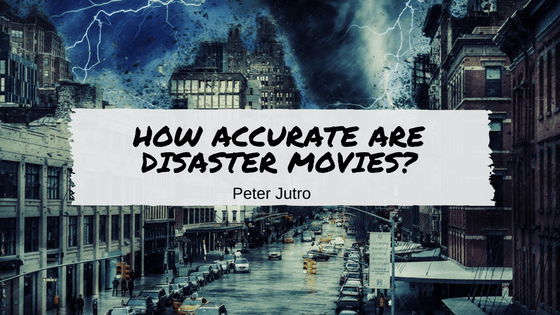Some disaster movies, though fun to watch, are grossly hyperbolized. You know the type: massive tsunamis that swallow cities whole, supersized tornadoes, pandemics that sweep the globe and render humans into flesh-eating zombies. As hyped up as some of these films may be for cinematic value, they are all based upon at least a basic level of truth. Movies such as The Day After Tomorrow and 28 Days Later depicting doomsday scenarios are most often classified as thrillers and not science fiction because they are meant to depict alternate realities.
The events in these apocalyptic films could, theoretically, occur in real life, so it begs the question: how accurate are they? Or, better yet, which ones are more accurate than others? Not every disaster film is created equal, in terms of budget or ratings, and of course, accuracy. Climate change is real, even if some people choose to ignore that fact. We are seeing the devastating consequences of a hurricane in Texas as I write this. We’ve already seen devastating natural disasters, such as Hurricane Katrina, Superstorm Sandy, earthquakes in Haiti and Indonesia, and the cataclysmic 2011 tsunami in Japan. Many of the Hollywood flicks aim to invoke fear to draw in the crowds and pay off their massive budgets, and their scenarios pose no real reason for concern, so some disaster films should definitely not be taken at face value. Others, however, sometimes serve as dire warnings of a potential not-so-distant future. Here’s how some of the popular ones stack up.
Some accurate ones…
Although virtually no Hollywood blockbuster film is without its errors (it is Hollywood, after all!), a few are actually praiseworthy for their attempts at accuracy or certain elements of truth. The Perfect Storm (2000), was not only a smash hit but also one of the most scientifically accurate disaster films of all time because it tells the true story of the commercial fishing boat, the Andrea Gail, which sailed into a horrific storm caused by a confluence of atmospheric conditions. Twister (1996), may be the epitome of classic disaster film, but the story of the film’s storm chasers is based on the real-life attempt of the NOAA Severe Storms Laboratory to place an instrument with meteorological sensors in the path of a tornado. Dante’s Peak (1997), as a third example, had a few major factual errors that were criticized by the scientific community, but was also praised for its accuracy in depicting the 1980 eruption of a composite volcano, Mount St. Helens.
Some not-so-accurate ones…
Then there are the films that you know had to have enormous budgets and are more about the thrill factor than accuracy. The Day After Tomorrow is a prime example of extreme weather conditions that could happen, but on a much smaller scale; the events in the film are highly propagandized, however, to build awareness of global warming. On the other hand, the film did prompt movie produces to help turn former Vice President Al Gore’s climate lectures into a documentary, An Inconvenient Truth, two years later. It, in turn, sparked a national conversation about climate change. Another film that may seem eerily realistic on the surface, Outbreak (1995) is not actually grounded in scientific fact. While the spread of the deadly Ebola virus portrayed in the film accurately represents what could happen if a biological pandemic were to infect the population, the way the scientists seek to save the world by transferring antibodies from a monkey to humans is unlikely.
There are plenty of other disaster films that could be viewed in a similar manner for their levels of scientific fact or fiction, but the point is that any Hollywood disaster film should be viewed with a grain of salt. Always look beyond the screen to determine where truth ends and fiction begins, but be cognizant of the films’ underlying warnings as well.

